|
|
|
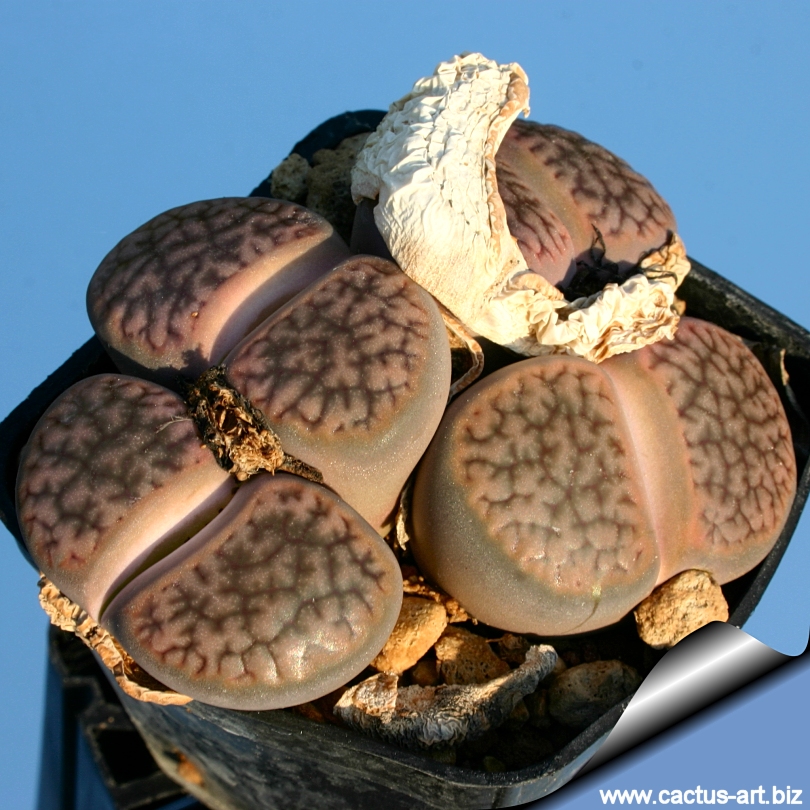
Lithops hookeri v. subfenestrata "brunneoviolacea" C19
TL: 40 km SW of Griquatown, S.A.
Nice form with unusually murky
windowed apex slightly humped with a
rich red-brown to violet coloration.
|
|
Description: Lithops hookeri is a medium to very large
species, up to 46 X 35 mm, usually about 30 X 23 mm. with up to 10 or
more heads (mostly 2-4)
Body (paired leaves): Obconical, truncate, top surface flat to
slightly convex. The face is elliptical more or less equal. The fissure
is shallow 3-7 mm, the lobes are conjunct. This species is
characterized by an obscure network of simple and forked groves and
lines, and numerous irregular small island enclosed by groves. Margins
are irregularly incise with narrow lines tapering out of the grows. This
species is quite variable and the colours and face pattern varies
considerably in plant from different provenance.
Lithops hookeri comprises several more or less
intergrading and distinct variety:
-
var. hookeri (Berg.) Schwant. (1908) Cole numbers:
C110, C112, C113, C114, C118, C142B, C340 (Vermiculate form) C023,
C051, C335, C336T
Usually without windows and with rare dusky dots, but with an
obscure network of simple and forked groves and lines, and numerous
irregular small island enclosed by groves. Margins are irregularly
incise with narrow lines tapering out of the grows. The colour of the
margins and face island comprises opaque brown or buff or greyish,
reddish, pinkish or orange-brown. Channels and grooves are opaque or
very obscurely transluscent greenish brown or grey, greyish or
brownish green, orange or reddish brown or red. Lines dull dark red.
Shoulders as for the face dull grey.
-
var.
dabneri (L. Bol.) D.T. Cole (1965) Cole numbers C013,
C085, C301
Differs from type for a relatively frequent presence of shadowy,
obscurely translucent windows. Shoulders, margins and island opaque
grey or bluish, pinkish, or brownish grey or greyish brown, often
slightly more intensely coloured around the margins, Channels various
shades of obscurely transluscent slate-grey, dark bluish or greenish
grey or greyish or brownish green. Lines dull dark red. Dusky
dots dull dark greyish green.
-
var.
elephina (D.T. Cole) D.T. Cole (1970) Cole numbers C092,
C093
Differs from type for the wider and shallower channel and for the
generally absence of rubrication.
Margins and islands opaque grey tinged, pale pink or brown. Channels
obscurely translucent greyish green, grey or greenish grey.
Rubrications (if present) very obscure dull red. Shoulders opaque grey
to brown.
-
var.
lutea (H.W. de Boer) D.T. Cole (1964) Cole number C038
Quite the same as var. hookeri with large island and coarse
network of grooves. The margins, shoulders and islands varies from
opaque beige tinged with with pink, brown, yellow or orange. Channels
various shades of opaque or very obscurely transluscent orange-brown,
orange-red, brown, red-brown or greenish grey. Rubrications blood-red.
Dusky dots dull dark greyish green.
-
var.
marginata (G.C. Nel) D.T. Cole (1946) Cole numbers C035,
C137, C338; (Cerise form) C088; (Red-brown form) C053,
C089, C154, C155, C337
This is more variable varieti for face colours with a tendency to
wider channels and more open windows. Shoulders, face margins and
islands, opaque yellowish, greenish, pinkish or brownish grey, yellow
or pink beige, reddish grey, the margins often obscurely banded with
more intense colour. Windows and channels various shades of obscurely
transluscent greyish or brownish green, greenish brown, greyish red or
dark grey. Rubrications bright to dull dark red, orange-red.
Dusky dots dull dark greyish green.
-
var.
subfenestrata (H.W. de Boer) D.T. Cole (1964) Cole numbers
C021, C156, C175; (brunneoviolacea) C019
Distingushed for having obscurely transluscent windows with very
shallow channels, obscure islands, dark brownish slate colour and
polished appearance. Shoulders, face margins and islands various
shades of opaque brownish grey, buff or greyish, yellowish, greenish
or pinkish brown; the margins often suffused with a band of more
intense colour. Windows and channels various shades of obscurely
transluscent dark brownish slate, brownish green.
-
var. susannae (D.T. Cole) D.T. Cole (1970) Cole number C091
This is the less reticulate form and also the smaller in smaller size.
Shoulders, face margins and islands various shades of opaque cream or
pale grey, often tinged with yellow, green, pink or pale brown, the
margins occasionally banded with more intense colour. Channels various
shades of obscurely transluscent greyish green, greenish grey, brown,
or orange-brown, sometimes more intensely coloured in the margins.
Rubrications obscure dull red.
Cultivars:
-
Lithops hookeri cv' Envy' The plant is yellowish-green in
colour, but is otherwise the same as var. hookeri.
-
Lithops hookeri var. marginata cv'Shimada's Apricot' It
differs from var. marginata in its pinkish apricot colour.
|
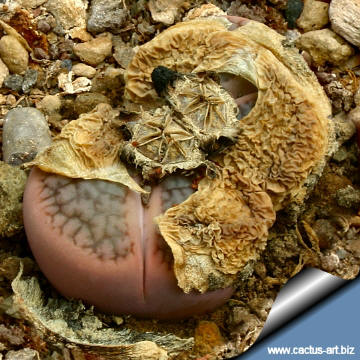 |
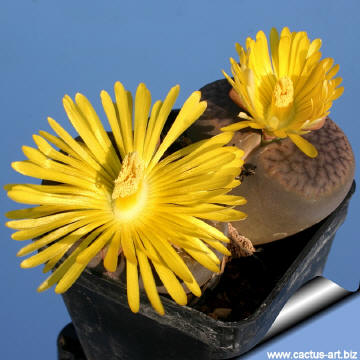 |
|
. |
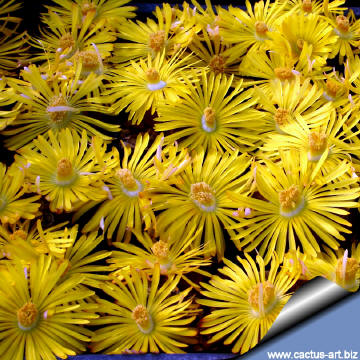 |
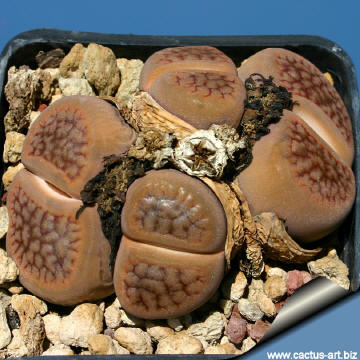 |
|
. |
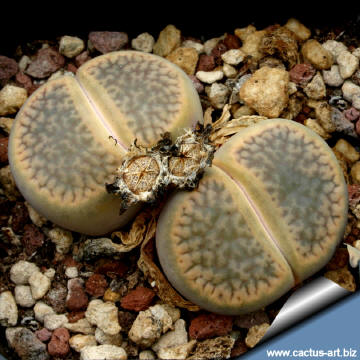 |
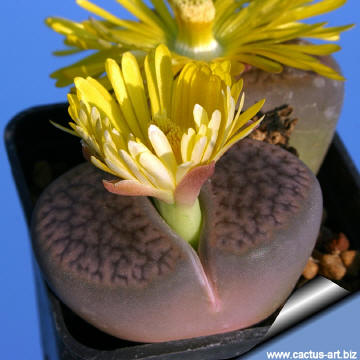 |
|
. |
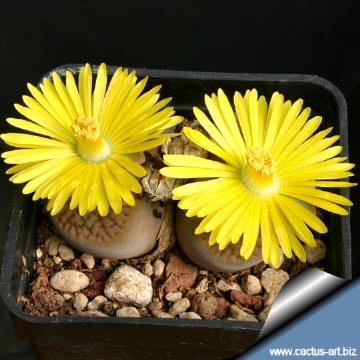 |
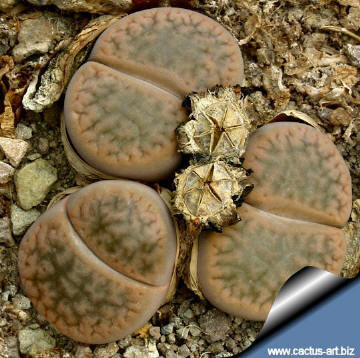 |
|
Advertising
|
|
|
|
Family: Mesebrianthemaceae (Aizoaceae)
Scientific name:
Lithops hookeri v. subfenestrata (De Boer) D.T. Cole1988
Published in: D.T. Cole, Lithops Flowering Stones: 220: 1988
Synonym: Lithops
turbiniformis var. subfenestrata
Habitat:
Lithops are an expression of particular
niches, L. hookeri var. subfenestrata grows in a rocky
ground among the equally
shiny dark and implausibly shiny ironstone.
Common English Names include: Stone plant, Living stone.
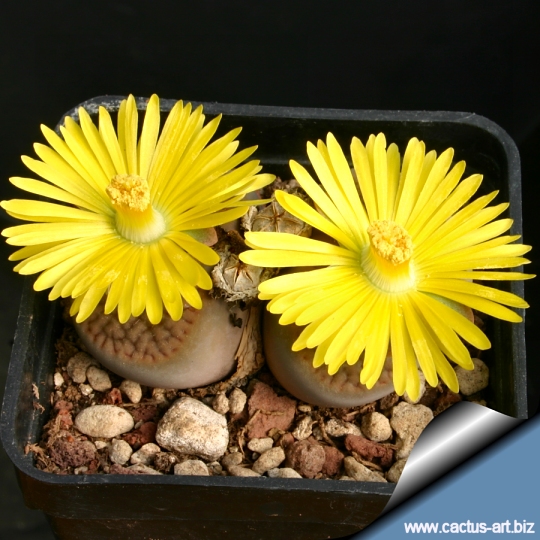
Flowers are Yellow in late summer. |
|
|
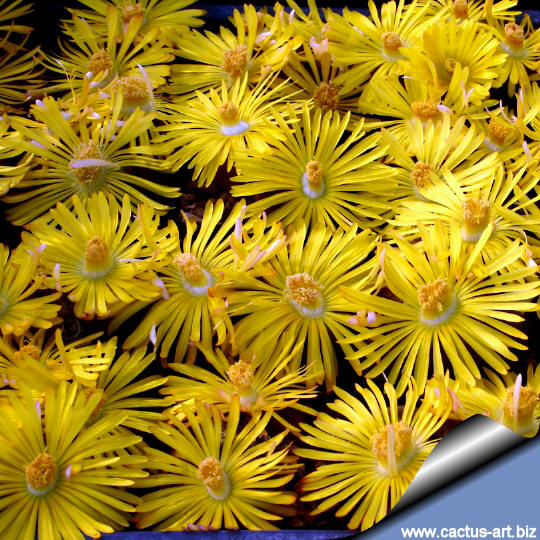
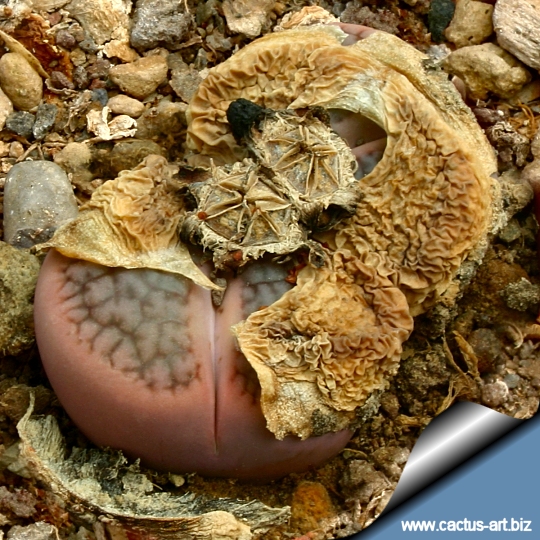
Remarks: Lithops are partly
subterranean, with only the clear 'window'
in each leaf tip exposed above soil. A type of optical system exists
whereby a layer of apical tissue rich in calcium oxalate crystals acts
as a filter to intense sunlight before it reaches the thin
chlorophyllous layer below. They are also called
mimicry plants as they show a striking similarity to their
background rocks and are difficult to detect when not in flower. These
are the commonly known as pebble plants or living stones; each species
is associated with one particular type of rock formation and occurs
nowhere else. Its soil-embedded, subterranean growth form also reduces
the need for chemical defences against herbivores.
Cultivation: L. hookeri is a summer growing species with dry rest
period over winter. Easy to grow it tolerates a degree more excess water
than some particular hydrophobic species, even so it must have a very
open mineral, fast draining mix with little compost and a high degree of
grit, coarse sand, small lava gravel or pebbles. Give them the maximum
amount of light you are able to give them, but care should be taken
about exposing them to the full blast of the sun rays in summer. Such
tiny plants can easily get scorched or broiled and their appearance
spoiled (this may not matter in the wild, where the Lithops have
probably shrunk into the ground and becomes covered with sands).
The basic cultivation routine is: Stop watering after flowering. Start
watering after the old leaves completely dry. (Usually late March or
Early April) Water freely during the growing season, soak the compost
fully but allow it to dry out between waterings, no water when
cold. Some growers fertilize frequently, some hardly
ever. Keep them dry during the winter. Nearly all problems occur as a
result of overwatering and poor ventilation especially when weather
conditions are dull and cool or very humid. If too much water is
supplied the plants will grow out of character, bloat, split and rot.
Keep them in small pots as solitary clumps or as colonies in large,
shallow terracotta seed pans.
Note: After flowering in the
autumn and extending through
winter
season the plant doesn’t need
watering, but they will still be
growing, the new
bodies will be increasing in size extracting
water from the outer
succulent leaves, allowing them to
shrivel away. In fact the plant in this time extracts
water and
nutrient stored in the outer
succulent leaves, allowing them to
dehydrate relocating the water to the rest of the plant and to
the new leaves that form during this period until the old leaves are
reduced to nothing more than "thin papery shells".
Photo of conspecific taxa, varieties, forms and cultivars of
Lithops hookerii


|
|